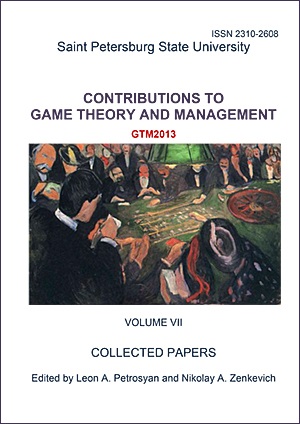Joint Venture's Dynamic Stability with Application to the Renault-Nissan Alliance
Abstract
The cooperative dynamic stochastic multistage game of joint venture is considered. We suggest a payoff distribution procedure (PDP), which defines a time consistent imputation. Based on the results obtained, we conduct a retrospective analysis of dynamic stability of the Renault-Nissan alliance. It is shown that partners within the alliance have divided their cooperative payoffs according to the suggested PDP.
Keywords:
strategic alliance, joint venture, dynamic stochastic cooperative games, dynamic stability, normalized share
Downloads
References
Downloads
Published
How to Cite
Issue
Section
License
Articles of "Contributions to Game Theory and Management" are open access distributed under the terms of the License Agreement with Saint Petersburg State University, which permits to the authors unrestricted distribution and self-archiving free of charge.




